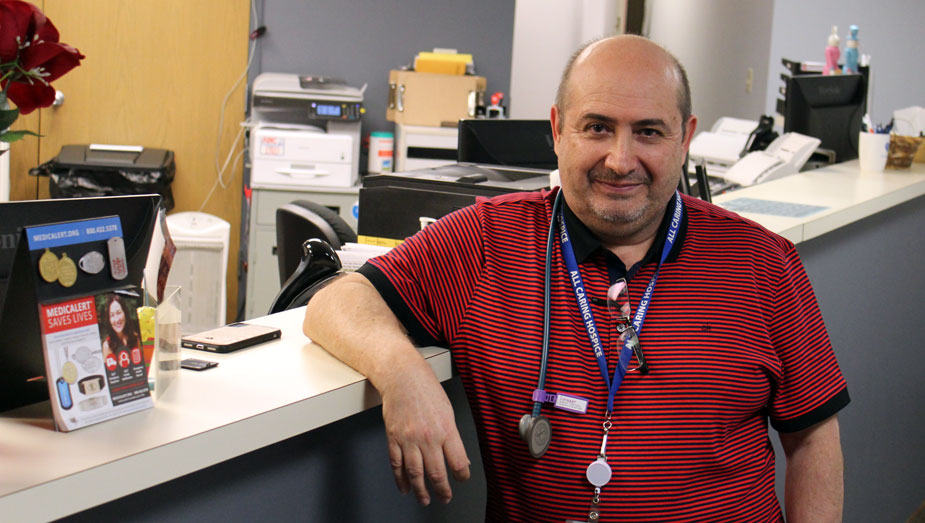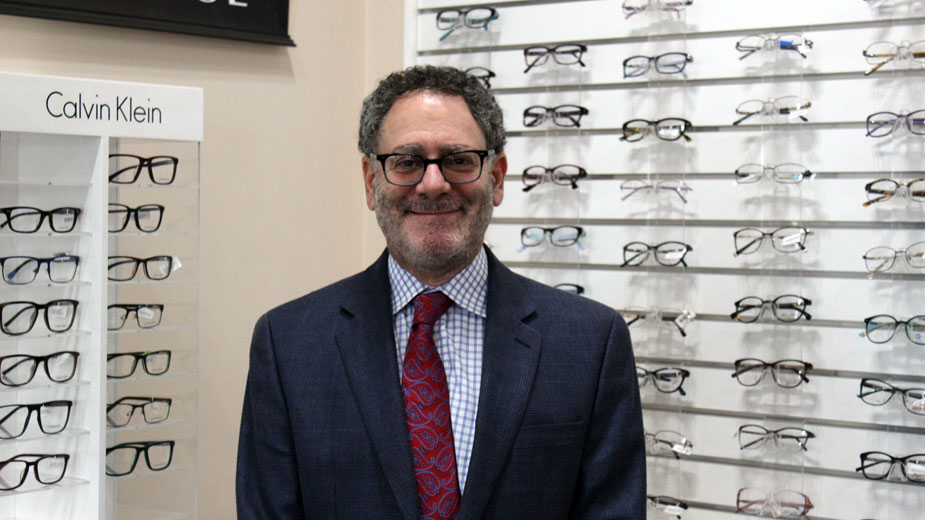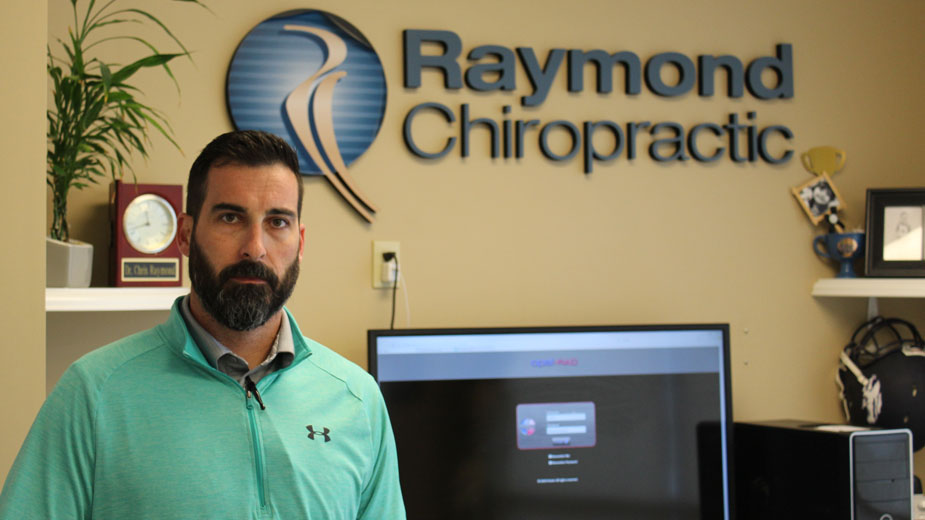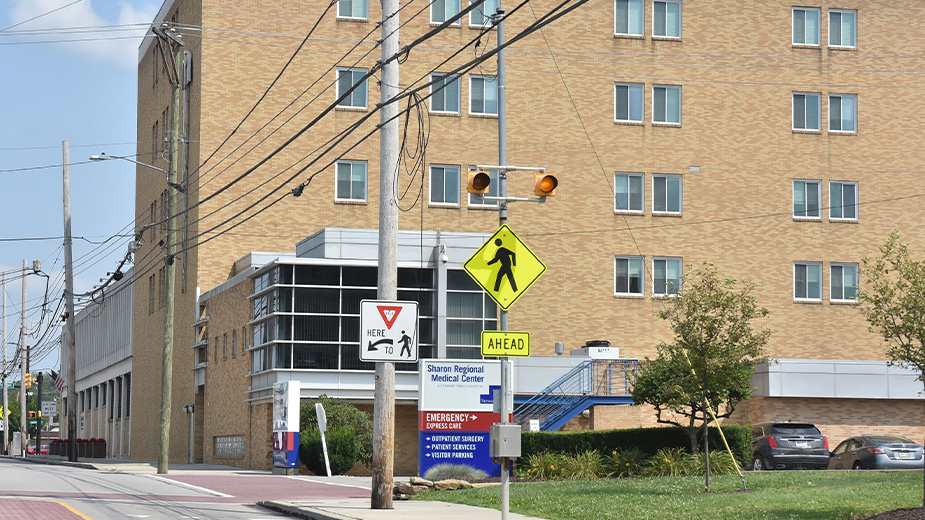Running a Healthy Practice is Hard Work
Starting a business isn’t easy. Starting one when you’re not just worried about the bottom line, but also your clients’ health and well-being?
That’s even more difficult. Dr. Chris Raymond can attest to that.
“They say the first five years are the hardest and my first five years were the hardest thing I’ve ever done,” says the owner and founder of Raymond Chiropractic, Austintown. “But I wouldn’t change it. You learn a lot, make mistakes and hopefully don’t repeat them.”
When he started in 2008, Raymond worked every job in the office, splitting his time between the medical and business sides of the practice.
Medical school did a “phenomenal job” of teaching one side of running an independent office, he says, but didn’t offer much, if anything, in the way of teaching students how to run a practice.
“There’s this impression that you’ll graduate with the degree, hang your shingle and people will just flock,” Raymond says. “That’s not the case.”
Instead, he had to spend hours learning the ins and outs of each insurer’s billing systems, while working on marketing his practice, buying – and more important, being able to afford – the necessary equipment and handling the usual costs of business, such as rent and utilities.
“Everyone has a different health-care plan and it takes some investigation to learn. I made mistake after mistake on billing things properly or entering the right code or whatever it may be,” he said. “But you learn how it’s supposed to be done. The business stuff is tough, no doubt.”
Independent doctors such as Raymond are an increasingly smaller breed.
In a survey last year, The Physicians Foundation found less than a third – 31.4% – of physicians were independent-practice owners, while 41.9% of the 8,700 surveyed reported being employed by hospitals or health-care groups. And for younger doctors, the separation is even starker: 53% of those 45 and under worked for hospitals and groups and 17.7% considered themselves independent-practice owners.
“There’s fewer of us small, freestanding practices that are hanging on. I’ve been doing this since I finished my residency in ’91,” says Dr. Santuccio Riccardi, founder of Primary Care Associates. “I got done and put my shingle up. That’s not common today. The day someone graduates and starts his own practice is a rarity, for a variety of factors that have been thrown on us.”

Among them are increased regulations, rising business costs and segmentation throughout the health-care industry, factors that are often intertwined.
Riccardi points to the implementation of electronic health records across the industry as an example.
Since 2014, with implementation of the American Recovery and Realignment Act, there is a federal mandate that medical offices – whether they be independent practices or large systems – implement electronic record systems. Practices that fail to do so are penalized through reduced Medicare and Medicaid reimbursements.
“You’re talking about thousands of dollars [to implement a system]. A lot of it’s determined by the size of your practice. I have a laptop computer in each room. There’s the internet, the software [and] the updates that are the upfront costs,” Riccardi says.
“Then there are the costs you can’t put money on. Sometimes we’re less efficient. There was a study that found doctors spent 50 hours a year logging on and logging off. Everytime I go into a patient’s room, I’ve got to log in.”
Primary Care Associates employs three doctors including Riccardi, a nurse practitioner and a staff of 25 between its offices in Boardman and the north side of Youngstown.
For Dr. Brad Bloomberg of Bloomberg Eye Care, putting an electronic record system into place was the largest investment the company has made.
The practice, started in the 1950s by Bloomberg’s father in downtown Youngstown, has offices in Austintown, Niles and Boardman. In 2015, he joined with business partners to move into larger offices and upgrade its systems.
“It’s something that I think some people take for granted because it’s in all facets of health care, but it’s a very expensive endeavor for any doctor to take on,” he says. “It’s extensive and expensive.”

Physical equipment is no small price and is crucial to providing care. The optometry office, which employs four doctors in addition to Bloomberg and a staff of 15, has added an optical coherence tomography scanner, allowing doctors to look below the surface of the retina and better manage issues such as macular degeneration and glaucoma.
“A lot of the instrumentation that we rely on has become automated and computerized, making it easier to assess complex problems in the eye,” he says. “We update equipment as often as we’re able to financially and as frequently as the demand is there for the service it provides.”
When he started his chiropractic practice, Raymond spent $25,000 on an X-ray machine and recently spent about the same to upgrade it to a digital system.
“I just priced out a new table and on the low end, for all the gizmos and gadgets I have, it’s probably $5,000 or $6,000,” he says. “Electronic health records was $9,000. Chairs, office equipment, computers – it adds and adds and adds.”
The next step is the new building under construction at 1440 S. Canfield-Niles Road. A $2.6 million project, it will house Raymond Chiropractic and a doctor each from Southwoods Health and Steward Medical Group.
“I’m going to be doing this for a while longer. I looked at it as an investment. If I’m paying rent, I’d rather pay myself,” Raymond says. “If you look at retail stores, that’s a dying breed because everything’s going online. Health care is always going to be there, one-on-one and brick-and-mortar. If I can spend the same amount of money on rent as I do on owning a building and then have a building in 20 years, so be it.”
Affording such upgrades isn’t a simple matter. Most prices for medical services are bound by negotiated rates with insurers, meaning pulling together the money for a new piece of machinery isn’t as simple as raising prices. Meanwhile, the costs of health care are increasing and rates for Medicare and Medicaid frequently lag those gains.
“Many of us are forced to either change the way we practice, see more patients, decrease our overhead or become employed [by a hospital group],” Riccardi says. “The problem is you don’t know what’s going to happen year to year; you don’t know what the third parties are going to be paying for what.”
Optometrists, Bloomberg adds, are in a position slightly apart from other medical practitioners in that they operate a retail side as well, selling glasses and contacts in-office.
Although the rise of online shopping has hampered those sales somewhat, Bloomberg has worked to improve the value of in-store purchases, including expanded product offerings and bundle packages.
“It’s like wearing two different hats. There’s the medical side and the business side. The two of them certainly cross over, but in this day and age, there are things that affect our business dealings,” he says. “Obviously, with the internet, everyone feels they can buy their glasses or contacts online. That’s a discussion we have hourly in our practices.”
Even with all the challenges of operating an independent medical office, the doctors maintain that they wouldn’t do it any other way, both for their sakes and their patients.
Optometrists, Bloomberg says, serve as an important gate in the health-care spectrum, with many health problems, such as diabetes or high-blood pressure.
“A lot of people who skip their physicals and care with physicians still go to get their eyes checked or go to the dentist to get their teeth checked,” he says.
For Riccardi, independence means providing care as he sees fit. Twenty-five staff at two offices is above average, he notes, but it means there’s always someone to talk to patients, either in-person or over the phone. Running his own practice, he continues, means he has more skin the game.
“My relationship with my patient is the most important thing. If I had another entity involved, our relationship is complicated enough as it is without other people getting into it,” he says.
And for Raymond, an independent practice has always been in his cards. “I’ve always wanted to be my own boss,” he says – and will continue to be for the foreseeable future.
“I’m as big as I want to be as a single practitioner.”
Pictured: Raymond Chiropractic is set to open a new $2.6 million building on Canfield-Niles Road later this year, says founder and owner Dr. Chris Raymond.
Copyright 2024 The Business Journal, Youngstown, Ohio.



